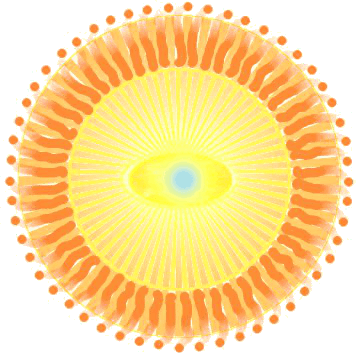The Disc Herniation Is Not The Cause Of Your Pain... It's Something Else
- Jay Uecker, D.C.
- Mar 1, 2014
- 4 min read
In this article I’d like to talk about disc herniation. You have twenty-four spinal vertebrae. Between each of those vertebrae is a connective tissue pad that’s called a intervertebral disc. A disc herniation is where the connective tissue wall around the outside of one or more of those intervertebral discs gets weakened. This may result in a bulge in the disc, or a tear may develop and the inner layers of the disc can actually start to push out, causing a herniation. You may have also heard a disc herniation referred to as a bulging disc or a slipped disc.
It is commonly purported that the herniated disc material puts pressure on nerve roots that lie against the spine and that that’s what causes the pain and/or other symptoms that can be associated with disc herniation. This makes sense on some level and certainly that can be the case in some situations. On the other hand, there’s a lot of research that shows that the presence of disc herniation doesn’t necessarily equate to the pain and symptoms that people generally associate with disc herniation. In fact, in one New England Journal of Medicine study, 98 people without symptoms were given an MRI. The study found that 52% of the these people had a bulging disc in at least one level of their spine. The study concluded that: “Given the high prevalence of these findings and of back pain, the discovery by MRI of bulges or protrusions in people with low back pain may frequently be coincidental.” This implies to me that there are some other factors that are involved in the pain and symptoms associated with disc herniation.
I would suggest that at least one of the other major factors, if not THE major factor, is the survival patterns that get stored in our nervous systems from a very young age. This is the same survival patterning that I’ve talked about in most of my articles as being the source of a lot of the symptoms that people experience in their bodies and lives.
These core survival patterns involve tension that’s being held at the core of our system to sequester energy that’s been deemed unsafe to feel. This chronic tension creates quite a bit of pressure in our pelvis and low back and belly area. This is a very common, human situation. We hold that tension there in order to fragment ourselves; to keep our vulnerable belly and low back separated from our heart because we’ve learned that vulnerability is equal to weakness. The pressure that gets creates within the intervertebral disc is analogous to squishing to ice cream cones together. The pressure causes the ice cream, or the intervertebral disc as it were, to squish out the sides.
Incidentally, a lot of the pressure happens in our spine in our lumbar spine and at the base of our neck. It just so happens that the most common place for disc herniations is in the lumbar spine, and the base of the neck is the second most common place that disc herniations show up.
Another important product of the survival patterns in our system is that we tend to change our posture. We change our posture in order to create pulling or stretching in our spinal cord. The stretching of our spinal cord is a primitive strategy that human have that allows them to decrease the range and depth of what they can feel. It’s a handy strategy for disconnecting from things, especially emotions, that our nervous system has decided are too painful to experience. In light of where disc herniations show up, it’s interesting to note that the spinal cord is becomes anchored to the bones (it floats freely everywhere else) starting in the lumbar spine and in the lower neck. The stretching in the spinal cord tugs on the nerve roots where they are anchored to the bones. From the perspective of the work we do here, what happens is that those stretched nerves are being stretched across the hernatiated disc material. This is why removing the herniated material with surgery helps, because it gives the nerves a little more room to move and can temporarily relieve symptoms. However, the fundamental problem, the pressure being stored in the system that’s translating into the disc and the stretching of the spinal cord, is still there. And so problems of some nature are likely to resurface down the road.
I would suggest that a more complete solution to disc herniation would be to address the core tension in the system and the spinal cord stretching that happens as a result of the survival patterning in the system.
Works Cited:
Jensen, Maureen C., Michael N. Brant-Zawadzki, Nancy Obuchowski, Michael T. Modic, Dennis Malkasian, and Jeffrey S. Ross. "Magnetic Resonance Imaging of the Lumbar Spine in People without Back Pain." New England Journal of Medicine 331 (1994): 69-73. <http://www.ncbi.nlm.nih.gov/pubmed/8208267>.
#discherniation #herniateddisc #discherniationrelief #alternativechiropractor #chiropracticadjustment #chiropracticcare #chiropracticlouisvilleco #chiropracticoffice #chiropractor80027 #chiropractorsinlouisville #hippain #jayuecker #louisvillecochiropractor #lowbackpain #networkcare #networkchiropractic #networklifecenter #networkspinalanalysis #pain #painrelief #videos #chiropracticboulder #alternativehealing #boulder #broomfield #chiropractic80304 #chiropracticboulder #chiropractorsinboulder #denver #healingchiropractor #longmont #superior #westminster #drjay








































Comments